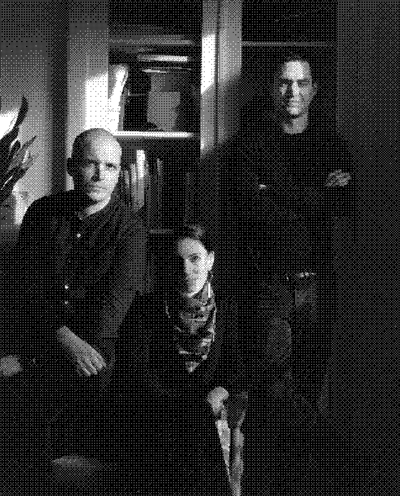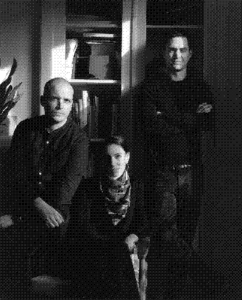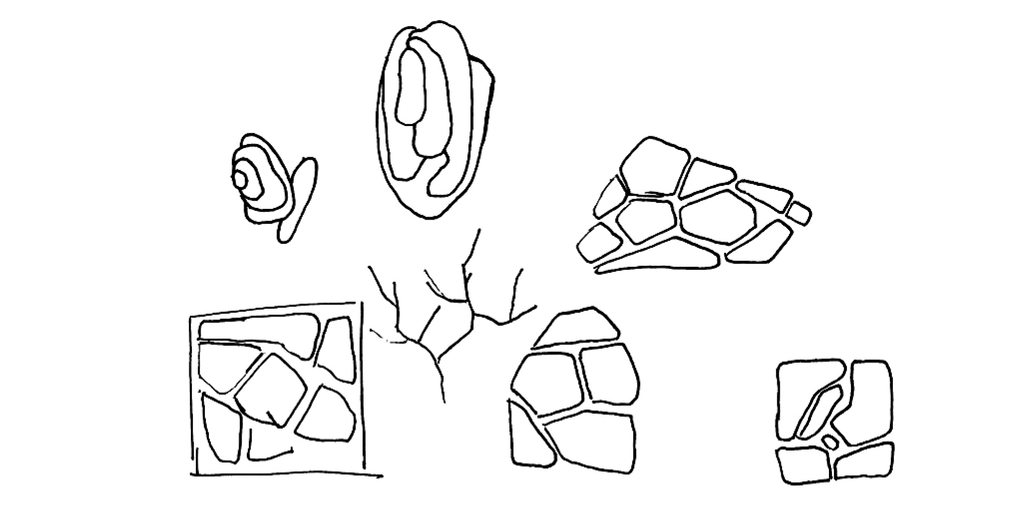Hi, James and Jack, could you please introduce yourself?
I’m James, I am one of the cofounders and creative directors at Tomorrow Bureau, based here in London.
JF
My name is Jack, and I’m also one of the cofounders and creative directors at Tomorrow Bureau.

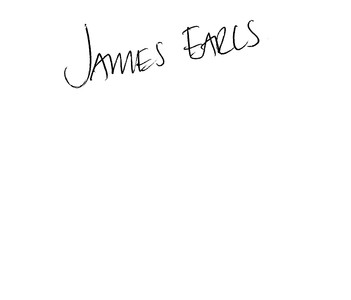
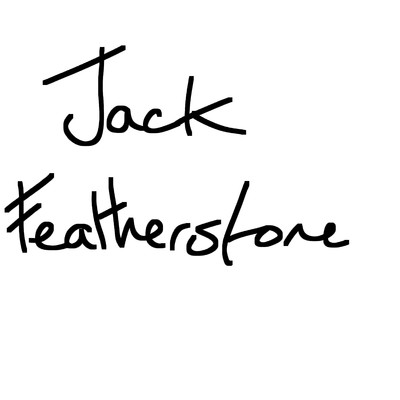
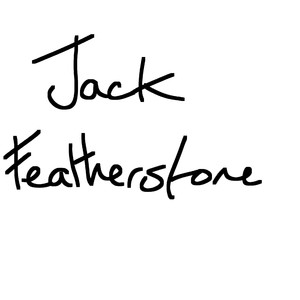
How do you present Tomorrow Bureau?
It’s a design and art studio, as both of our backgrounds are in design, and the art studio element is because we enjoy being able to delve into our own ideas and explore them in a free space that informs the client of what we do.
You also have Studio Crême, which was your first studio.
We’re actually in the process of winding it down. I’d been working under that name for maybe 10 years as a freelancer/independent designer. Jack and I teamed up six years ago. We started working together and we both still liked the name so we thought: “Let’s keep it”. Three years ago, we decided we needed to do something new. And that’s where Tomorrow Bureau started “germing” because we had everything living under one roof: graphic design for bakeries and small restaurants and fashion labels, but also mental campaigns with Dekmantel and 3D films, and it kind of didn’t make sense. It made sense to us, but not outwardly.
JF
We started Studio Crême with the naive belief that we could start a design studio that did both design and moving image, that we could market underneath the same umbrella. But the projects splintered so far away from each other in terms of context and clients that it became obvious it wasn’t landing well enough with our market. We had to repackage the work that was coming our way and there were on the one hand, kind of traditional, nice boutique design jobs, and on the other, quite bizarre, avant–garde moving image campaigns. It became obvious to us it was hard to marry the two of them. We needed a new strategy, and that was to create Tomorrow Bureau.


When you created Tomorrow Bureau as a side project, did you have in mind that it would change your image?
It was completely conscious and strategic. It was a big lesson for both of us: analysing our position, our situation, and having a cold hard look at our place and realising that something needed to change. What’s happened is we find ourselves in a position where Tomorrow Bureau has taken off and taken precedence – which wasn’t really the plan, James, was it?
JE
That wasn’t the plan but that’s what happened, and it’s great. It was a reaction to where we were with the business and how things were going for us. I think you have it in your questions: is there a favourite child? (laugh) I wouldn’t say Tomorrow is the favourite child but it’s the strongest child.
We noticed those videos you did, the very first posts on Tomorrow Bureau, and your interesting use of CGI, not photorealistic, was it your initial intention to go beyond the technical side?
Thank you. Well, Tomorrow Bureau was quite a long time in the making. We thought about it long and hard, and the end result was a natural one. It wasn’t hard for us to arrive at Tomorrow Bureau but making the work for the launch obviously took a lot of time, and to get the projects lined up for that launch was a lot of work. It’s important to say that the intention was for Studio Crême and Tomorrow Bureau to run side by side as different channels of work, and also as different reflections of us as designers. As James mentioned before, we are designers at our core, and in the wider sense. It just happens that Tomorrow Bureau has taken off, and we’re making work for that format, but that doesn’t mean that we’re done with other fields of design: we’re still very much interested in branding, strategy, and experience.

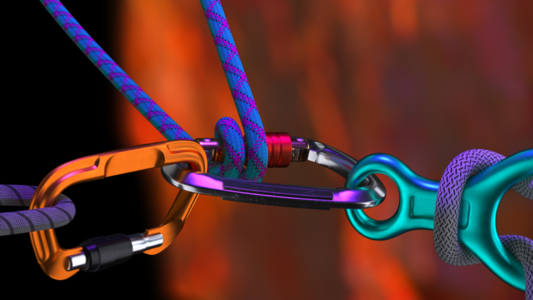
001 xtreme scenario
One of your projects – Alter Projects you did with Studio Crème – could fit within some branding from Tomorrow Bureau.
We’re winding down Studio Crême, as a name and as a practice, to renew it in another format. But we’re not done with that side of the industry, we’re still invested in it and involved. And we’re in the process of working and developing a series of self‑initiated projects for a new practice that will be called ProtoÉditions which will reflect areas that we are interested in and enable us to explore them, giving us a bit more freedom. We’ll be leading with self‑initiated work. It’ll be medium agnostic. It could be a 3D film, a piece of AI, a photo…
Are you trying to achieve a virtuous circle, Tomorrow Bureau being a sister studio to Studio Crême and now ProtoÉditions being a future sister studio of Tomorrow Bureau?
Yes, something like that. The experience we’ve had through Tomorrow Bureau for the past couple of years has been so amazing, and we’ve learned so much. Our thoughts are naturally more strategic ones. Now we find strategy interesting, we find things that are more high level business fascinating. It’s just us evolving as designers, and as creators operating in a market: the more we interact with clients and learn about business, the more we become interested in their motivations and what drives them.
I think ProtoÉditions will be launching in a similar vein to Tomorrow Bureau: it’s based upon what interests us, ideas, not just: “Oh, we’re just going to design a logo for people”. It’s about people and their motivations, and that stems from our experience with Tomorrow Bureau.
Going back a little; how did you meet?
We met 10 years ago at a warehouse party, in the depths of North London, where we were introduced by my partner. James and I flirted with each other for a while. I was working as an independent designer and creative from a studio in Shoreditch, and I was impressed by James’s natural design ability, but also his interest in business. That was just very obvious from the beginning. And that was what drew us together: we were motivated to do something together. He actually ended up moving into the space that I was in. We were working from the same space but independently. Just through conversations, we decided: why not try and do something together? I realised that we’re both quite different people, and we both have our own strengths. And that seems to have held us in pretty good stead.

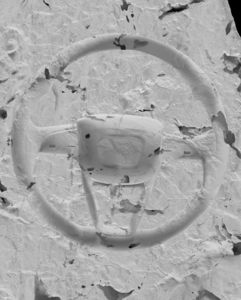
Auto Remnant
What are those different strengths?
We support each other in terms of our work and how we run the business. Jack is very strong in pushing the ideas and in the general creative fields we operate in, and really pushing the work we do. Because of that, I’m enabled – and I very much enjoy it – to focus on the business side, the structural side. I love people, I love talking to people. So I spend a lot of my time just trying to find new connections that we can work on.
JF
Maybe James is too humble to say, but he also has an incredibly vast range of references and his taste is very much on point. Getting to know James over the past 10 years has had a big effect on my interests and tastes in design. James is very much a creative director, as well as kind of the driving force behind the business side of our studio.
JE
We look at things from different perspectives. So that brings light to new and interesting ideas, and approaches to problem solving.
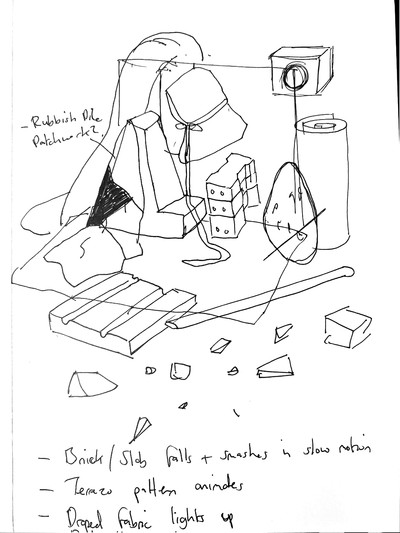
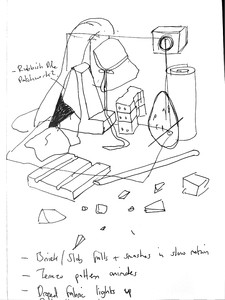
Sketch by Tomorrow Bureau
How do you make sure you maintain a good level of creativity?
One of the key things we’ve learned is to not look at Instagram that much, a healthy amount. We both find inspiration in things that are actually outside of what we do. Not necessarily 3D or even design but in the wider creativity, or just books and stuff like that. Having a broad horizon and being open to new things helps a lot. “Is this as interesting as it gets? Or is there something else that could maybe shed another light?” It may be science or art… We’ve recently done a lot of projects where we’re looking at scientific experiments to kind of inform the work we’re doing, which is… You know, that’s great.
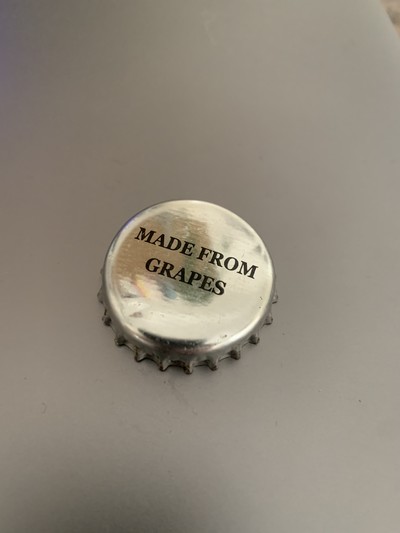

Portrait of James Earls
Was it part of your CGI work on the robots?
We worked with an industrial designer. He designed all of those robots with us. You don’t often get asked to come up with original design for robotics; we were suddenly no longer 3D designers, then it’s a different hat you have to wear, which is one of the things both of us really enjoy. With the work we’re doing, you have to look at architecture, you have to look at spatial design, automated design or robot design. It’s not just about making a pretty picture. There’s more that goes into it than that. And I think that’s what keeps us going, it’s the variety.

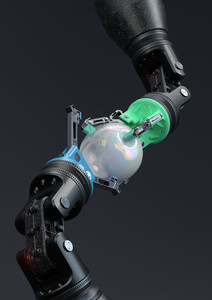
THERE tech lab the robots are coming
You have thought about Tomorrow Bureau strategically and you mention being curious about design, architecture, spatial design. Are you curious as well about strategy?
The realisation that we needed to be strategic was one of necessity. It is a series of decisions that culminate in where we are now, and when you realise that your choices actually make the success you have, you can’t help but be more interested in it. So what other decisions can we make? Where else can we bring change?
JF
I’ve personally never been interested in strategy at all, I never even knew what it was. I had a whole career before Tomorrow Bureau, designing record covers and music videos without any idea what a strategy was. And then the experience of starting a business and running it with James forces you into decisions that naturally form a strategy. And then reading a book on strategy a couple of years ago connected with me. It was like: “Oh, well, we’re doing these things naturally”.
I’m thinking about your strategy book. What was the one you read ?
Good strategy/Bad strategy. That’s exactly what it’s like: it’s realising that you have these capabilities without having to read a book. It just comes down to assessing the landscape, assessing your situation in a very honest way, even if that analysis hurts. I think that’s very important. If you build a strategy upon a falsehood, then that strategy is probably doomed to fail. Taking a cold hard look at your situation, and then building a response from that seems like the natural way of doing thing, when you read about strategy, that’s one of the first things they say.
Salomon Advanced - Campaign
And respecting your studio culture as well?
Some people have very successful careers based on falsehood. But it depends what kind of person you are. I think another element is that you have to be willing to tear things down and start again. As hard as that can be, it can be very rewarding. Both personally, as a business and creatively, you have to be willing to tear things down.
JF
The more we progress with Tomorrow Bureau and through our careers, the more comfortable I am with change and fluidity. The nature of things is that there’s constant flux and change and to be flexible with that reality is a far more effective way of navigating a career. Tomorrow Bureau left a lot of space for development, and for moving forward. I think that’s why we call it Tomorrow Bureau: it’s based on a sense of moving forward, moving towards the next horizon, and actually never arriving there. It’s about constant mutation and evolution. ProtoÉditions will be another expression of that.
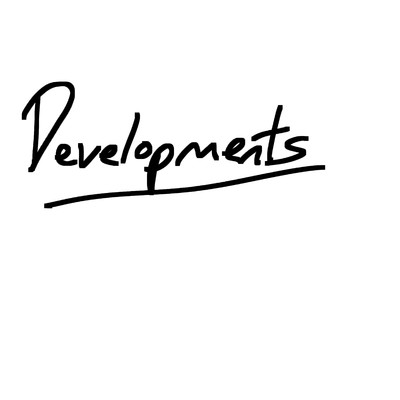
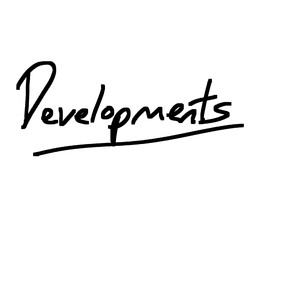
Sketch by Jack Featherstone
Do you have strong strategic references; not only books, but also models, some studios from the past…
The strategy element is both of us. I’m just quite observant as to how other people do things. I wouldn’t say I have huge strategic references, because much like Jack, before we had the need to really think about it, I just went with it and made decisions based on gut. That in itself could be deemed a strategy – and we base a lot of our decision making on gut feeling from the clients that we interact with, to the people we surround ourselves with.
Mainly, I have had experiences of how I don’t want to do things, and studios I don’t want to be like. There is a large human side to what we do – which is often overlooked. And as I said: I love people. Put me in a room and I’ll just chat away, it’s very hard to stop me. But I haven’t got any strong references for it, and the books that we started reading again, they’re out of interest, but there’s an interest that was born out of the wants and needs to understand things. When you don’t have the words to articulate the thought you’ve had, and then it’s just written in black and white, you’re like: “Oh, there you go!”
I was used to seeing strategy as a bit of a dirty thing, because in the branding world, “I’m a brand strategist”, it’s kind of flaunted around left, right, and centre, and it never resonated with me, it is something that would be –I don’t know, not “not useful” –just not something we would do. But increasingly it’s fascinating.
How do you make those decisions? Are you working with a strategic planner or advisors?
We haven’t got anyone who helps. I’m the one in charge of that element. We’ve tried things out in the past, and it wasn’t right. And we realised that and made the choice to leave it behind us. You have to because it can be a real drain.
JF
I feel I’ve always searched for mentors, or people who can help. That’s always been a want. But I can’t say that any guardian angels have ever dropped into my life and offered amazing pearls of wisdom. It just hasn’t happened. That’s not to say that it can’t, I would love a mentor to be honest. But it’s one of those things. It’s like wanting a big brother and never having had one. We’ve had to learn everything for ourselves.

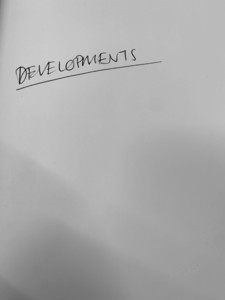
Sketch by James Earls
How do you take your major business decisions?
I think the partnership James and I have is quite weird because we threw ourselves into business with one another without having any idea of what that actually meant, and without any idea of what that journey was going to be like. We’re just lucky that through hard times, we’ve managed to fuse a relationship that works. It’s a bit like a marriage. We’re quite aligned with one another in thinking about things, most of the time – and if we’re not, we have quite open and transparent discussions to make sure we know where we’re coming from. So when it comes to big decisions, they’re usually made quite easily and quite quickly. We’re not labouring over decisions for ages. It gets to the point that we know something needs to change or that an action needs to happen… When both of our guts are aligned – and I think we both have learned to trust our gut feeling on things – then we just hit go. That’s how we make decisions.
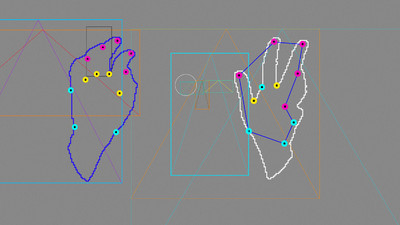
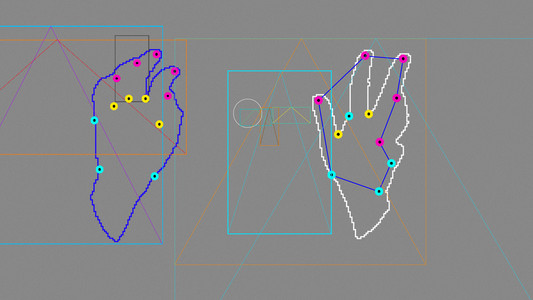
Autoportrait of Jack Featherstone
What are your ambitions at the moment?
To come back to what you were saying on this digital kind of cycle of one being sister to the next, Jack the other day said: “One’s the Ying or the Yang to the other”. The aim with ProtoÉditions is to explore real world topics. Both material innovation, technological and sociological changes, and what’s the opportunity for us as creatives in the midst of all of that. How can we find new ways of discussing those kinds of topics, new people to engage with? Looking at people in those specific fields that aren’t just designers, but are technicians or researchers or makers… It’s quite an interesting balance of dealing with digital, purely speculative worlds that we make with Tomorrow Bureau, but then on the other side, having the opportunity to delve into the world we live in and interact with, and look at it through a creative lens, and see how we can engage with it and how we can discuss those topics in a way that is both creatively fulfilling and feeds our understanding and knowledge on those topics.
JF
In relation to Tomorrow Bureau, our ambitions are to try and work on projects where the work is seen on a large scale. That’s always something that excites us. I came from a background in doing live visuals for electronic musicians, so I was kind of used to seeing my work, huge on massive screens and over the last few years, you spend all this time and energy making work to be seen on a tiny screen, which is not ideal. Any opportunity to make work for a large format is great. We want to continue to tell stories that are important to us. We’ve found ourselves in the position where a lot of the time we’re telling stories – which isn’t something that I ever thought that I would do, but actually that is the core of what we do, it’s to tell stories – even if they’re quite abstract ones. And then making work that is about topics that we find important: sustainability, technological innovation, and also to make work for products and brands that resonate with us personally. Brands that we believe in, that we think are doing great things, and then also products that we would use ourselves. It always makes a big difference when we’re working on projects that have those qualities.
JE
We’ve been very fortunate with the work we do with House of Innovation in Paris, there’s a combination of all of that, kind of large scale – well, that is seen when the store is not shut – and there are topics that are interesting to us. We spend our lives behind the screens making the stuff, it would be nice if the work didn’t just live on a 1:1 format on Instagram. And we could witness it for ourselves or see peopl … We’ve really enjoyed seeing people engage with the work, not in an interactive way, just actually looking at it, seeing it, and discovering it is quite a rewarding feeling.


Nike, House of innovation in Paris, move to zero visuals
Nike House Of Innovation Paris - Sneaker Lab Floor Artwork
You mentioned those desires to work with brands aligned with your vision. How do you enable that at the moment, in terms of prospection?
At the moment, a lot of the work we’ve done has come in organically. Some of it is through prospection: getting in touch, getting to know the people, the relevant person who can actually make that decision. But the good thing is that one kind of project generally feeds the other. That’s really interesting when you approach someone if the work you’re doing resonates, it’s quick for them to get in touch.
One thing we usually see is that growing studios have to learn how to say no to projects. How do you manage that?
Saying no to projects is a luxury. We love saying no to projects. (laugh) That’s the ideal position. There’s a spectrum, right? On one end, the ideal is to only ever work on stuff that interests you 100%. On the other end of the spectrum you’re doing work that you’re not interested in for money. You have to decide where you want to be on that spectrum, and where it’s realistic. If you’re a true creative, I think you probably want to get going towards the end of the spectrum that says: you’re only ever going to work on stuff that truly interests you. But as you said, there’s a thing called reality and financial obligations or so forth. So you find yourself somewhere on that spectrum, and it’s about constantly adjusting it, so that you’re gradually edging towards the interesting end.
Not knowing everything, from the outside, what we saw from Tomorrow Bureau is: we’ll do the CGI we like, then we’ll show some projects we like, it will be our communication and they’ll bring us clients.
I’d say that we ended up in CGI in a very odd way. The reason why I started dabbling with 3D or CGI was because I couldn’t afford to make sculptures or to build something that I wanted to make. As a designer, if you’re just limited to a flat screen or a piece of paper, it’s kind of frustrating. So I guess we approached CGI from a different place to where maybe some other studios approach it, but we never set out to be a kind of motion design CGI studio, we set out to make forms and ideas that interest us. It just so happened that CGI was the only way that we could express them. If we’re interested in the materiality of something, if we’re interested in colour, then we need to learn in 3D how to make that as tactile and pleasing as possible on the screen. And so we had to learn the tools of CGI.
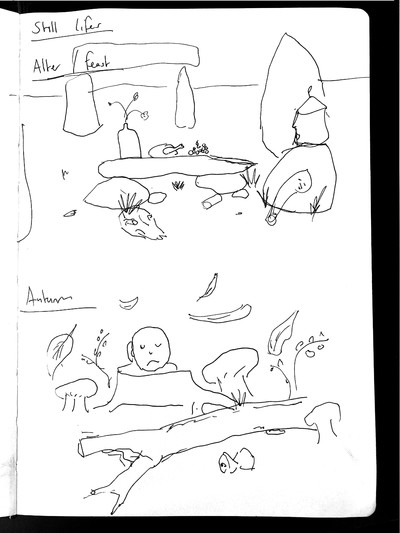

Sketch by Tomorrow Bureau
When did you feel something special was happening with Tomorrow Bureau?
Initially it was when we got our first client brief, our first proper job – which was Kenzo. We just had a good old party for my birthday. I was still in the mountains in Wales, and we got that email, and I was like: “Fuck!”(laugh)
JF
Although that was actually before we launched Tomorrow Bureau.
JE
That was, actually. We had publicity on a project, on the Heresy project we’ve done and we were gearing up to launch and we needed that hook, that one client, the brand to launch with. And here came Kenzo. And we’re like: “OK, well, everything’s aligned here. We’ll work through this project, and then we’ll launch off the back of it”. We did but launching something always takes a lot longer than you think. Especially with Heresy, because this was something we wanted to tell, and 3D was a really good medium to tell that story, it resonated with people. That was, and is still one of my favourite projects to this day. It was us learning new techniques and having a good time making it.
JF
For me, it’s sometimes quite difficult to know if something’s landing with people or not when you’re in the eye of the storm. You may have been confident in your abilities and in your work, but it can take time for your work to filter into a culture, through a network and often it doesn’t happen quickly enough for you to gain immediate satisfaction from putting projects out. But the times when I feel personally that something is happening with Tomorrow Bureau is when opportunities come our way that feel like they’ve been tailored specifically for us. That is such a nice feeling when you know someone has thought carefully about the studio. And not only that they’ve actually tailored the creative for us. That means that we’ve made a connection with another creative and they want to move on this journey with us.
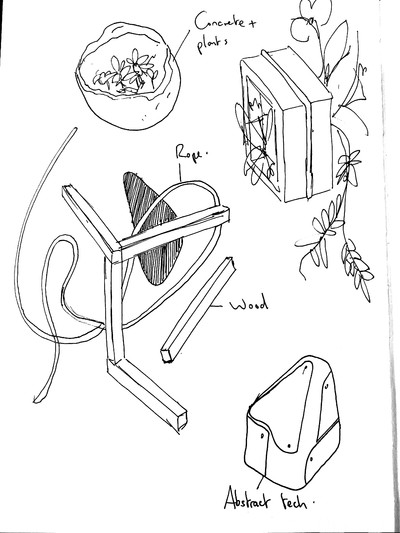
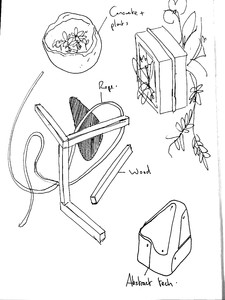
Sketch by Tomorrow Bureau
Was it the plan from the beginning that Studio Crême could be the one winding down?
I think we set up Tomorrow Bureau to create a space for a certain kind of work that we were making. We never had any intention of getting rid of Studio Crême… The intention was really just to make a space we found liberating and interesting for our moving Image work.
I love electronic music, that’s one of my other huge passions in life. I always used to love the way that people would stop record labels and start new ones. Like it’s nothing. Same with fashion labels. They can come and go and it’s the most exciting thing when a new label is started by someone who’s been in the game for many years, but suddenly has a fresh take or a fresh idea. We set up Tomorrow Bureau almost like it was a fashion label or a record label in that sense. It was an art and design studio, but I feel it had a similar attitude to a new record label or something. So in one sense yes, we are winding down Studio Crême, but in another it is simply evolving.
How many people are there at Tomorrow Bureau at the moment?
At the moment there are five. Jack and I, we have a producer, Anna, and Holly is our studio manager and we have someone on a trial period at the moment. What has been the success of our work is that we build the right teams around projects, we find the right people to bring on board. We have a group of people we love working with, so it creates a nice rhythm to the projects. We all know each other, strengths and weaknesses, and how to bounce them out. So there’s no ambition to become a mega studio. We don’t want that.

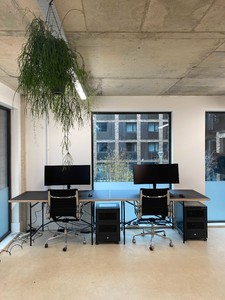
Tomorrow Bureau’s bureau
Do you have a threshold in mind?
I think eight to ten. Eight, probably.
JF
It depends on what happens with ProtoÉditions as well, because you can imagine a scenario where things fuse at some point towards the top of those two hierarchies.
In your duo, what are the managing roles? Are you both managing people and clients or is one of you doing most of it?
We take turns. I do a lot of client facing stuff, especially in the run up to projects, and then during projects, it depends on the project.
JF
Most of the time, I may be on the operational side of things, very deeply involved in the making, and in the details that are required, and then often, James is thinking about the business as a whole and looking at jobs that are coming in, analysing briefs, working on creative, and often liaising with clients. We do have a natural divide, but at the same time, we share the load a lot.
JE
For big presentations generally we’re both on the call. It depends again on the project, but Jack will often lead that side of things. I always find it slightly anticlimactic, when we send a first pass. Like the first creative we send, often it’s just an email and then we get a feedback PDF.
JF
I feel like if you can sum up an idea and send it to a client, then you don’t need to present it in person. I think you should be able to communicate everything within a document. That’s not to say that we don’t present. Of course we have to. But honestly, I think your communication skills should be good enough to be able to clearly communicate an idea in a document or with reference.
If you just send it through a PDF, how do you control the context in which it is seen the first time?
This is the discipline, isn’t it? This is something that we work incredibly hard on always learning more and trying to get better at it. It’s crucial: we put so much thought and effort into communicating our ideas clearly and concisely to avoid any kind of miscommunication. I’m not saying that we don’t present our ideas. Of course, we do. I’m just saying: I think your idea and your presentation should be so good that you don’t need to. Queries and questions should be able to be cleared up in a conversation. We receive really bad briefs a lot of the time. We know the difference between a really good brief that’s been well thought through and one that hasn’t. The ones that we get that are really good, we don’t need to talk to the people. We get it.
JE
It depends on the client. Sometimes the brief is brilliantly executed and clear. But sometimes they either need to be torpedoed, built from the ground up, to understand what the client wants.
Splash Proof
I’ve seen you’re recruiting at the moment.
We were recruiting for a role and we have someone at the moment we’re trying out for that role. The aim will probably be looking to hire some other people in the not so distant future – whatever that means.
Is the recruitment process just gut feeling as well?
It is. It’s incredibly hard. This is obviously something we, as business, as studio owners, have struggled with. It’s a difficult challenge to look at someone’s work and be able to spot how they fit into what we do. It is a gut thing because we’re going to spend a lot of time with that person, we will be paying them a salary, we will be taking care of them. You want to be around people like: “This guy’s great!” or “This girl is great!” or “They’re great!”, you know.
JF
In CGI, sometimes it’s very hard to know from someone’s portfolio what they actually did in that job. Maybe this is an area where we really need to improve our instinct. You never really know someone until you work with them. And you don’t know someone’s capabilities until you’ve worked with them. Actually, it doesn’t really matter how cool or how good you think their work is. Until you have a deadline, and you have some difficult technical challenges, and you have some clear art direction that you need to execute, then the proof’s in the pudding at that point. And it can often be a surprise.
What’s your view on the overall creative place nowadays?
I find the way I look at other people’s work has changed. As a designer, I used to be obsessed with what other studios were doing – and to a certain extent, I still do dip in and out. Because I know a few people who work in the industry and have an interest in it. But when I look at maybe other CGI studios, I’m not looking at what they’ve made, but who they’ve made it for. And the kind of things clients are expecting because… I think Jack touched on this a little bit is this spectrum of types of makers that we have now, that have been born through Instagram, or other things, that have really informed and forged client expectations, which is a tricky thing to navigate sometimes. Clients wanting something because they’ve seen it on Instagram or whatever. But we just don’t work with those people. It curves the expectations. What I think is an interesting thing in what we do – but then this will always come down to how good someone’s idea is – is how available and how fast the materials we use are becoming. The software are more readily accessible, the machines are more powerful. So there are going to be more people using it. But as you said about us, it’s often people using different software in an interesting way that I’m more interested in: “Oh, that’s pretty cool. How have they done that?” rather than just designers making 3D imagery. I find people still latch on to trends really quickly.
JF
Yeah, that’s one of James and I’s pet hates, people who make the same thing over and over again. It’s a classic strategy of an artist: you keep on doing the same thing again, and again, and again, and eventually you become known for it. And you can make money from doing that. But creatively, it just is hard for me to get my head around. I don’t know why you’d want to do the same thing again and again. And that feeds into trends, because why would you want to jump on a bandwagon and do exactly the same thing that you’ve seen a million people do ? So for us, one of the core principles of Tomorrow Bureau is that we founded our work in a sense of diversity. We want to be doing diverse ideas, we want to be having a diverse range of aesthetics, and we want to be telling a diverse range of stories. That’s really important. Even though people might come to us for specific reasons, we, on a personal level, want to be doing new things all the time.
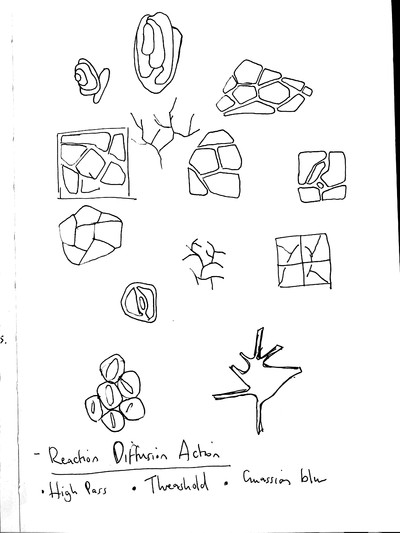

Sketch by Tomorrow Bureau
James mentioned at the beginning that you want ProtoÉditions to be medium agnostic. Is this a way as well not to be catalogued as CGI?
CGI is a great medium obviously but it’s not the only one. I wouldn’t say that tomorrow is a 3D Studio. It happens that the medium we use is 3D. With ProtoÉditions, we want to be able to work with someone who is developing an AI for something or a photographer or a furniture maker – depending on the topic and how we want to approach it. And that is important to us. But that also comes to how we approach the CGI work. There are so many areas we’re interested in – may they be scientific or music or in terms of materials that feeds how we approach projects, and we’ll differentiate each one. To me it is very important not to do the same thing again and again.
JF
I think it’s very important to know that both James and I had whole careers before we even opened up C4D. If I’m honest, we’ve only really been doing 3D for four years, maybe. We have a serious grounding in many other disciplines before we got into this game and getting into 3D allowed us to really express those things. I’ve never taught, but if I did, I would certainly encourage younger creatives to not just dive into 3D and start copying what they see on Instagram, because then you’re not building a strong enough foundation at all. I think it’s far better to educate yourself and to try your hand at many different things before just settling on CGI.
JE
Yeah, we notice a really clear difference between the many CGI people we work with, they have done something else before they’ve done CG, much like us. And often when they’ve been designers or have a design education, they have a very different approach to making than someone who just is a CGI person. They’re not looking at the same things.
James, you seem to stay away from Instagram as much as possible.
I use it but have a limit on my phone: 20 minutes a day. And I respect it as much as possible. As soon as it comes up…
You press “ignoring the limit”?
It keeps on extending, I’m at five hours a day now. (laugh) No. I don’t know. I just think it’s a very untruthful medium. And I think it makes our life harder, for multiple reasons. You’re just seeing something put out into the world. You have no idea what’s going into market… It makes it very difficult for us, for instance, when we hire people or freelancers we’ve maybe found through Instagram, and we look at their work and it’s like: ”Oh, it’s not client work, but it’s good work”. And, you don’t know maybe they spent three months making that one post. And there’s just so much crap.
JF
I’d maybe be a little bit more brutal about Instagram, like it’s a necessary evil for us. It’s a promotional tool. You people found us through it. So in a way, great! But I think it’s incredibly unhealthy for creativity, personally. I think it creates mental health issues for creatives who are trapped in an endless feedback loop of comparing their work against others. I think it creates monocultures within creative scenes that are incredibly boring for anyone who’s interested in diversity of ideas. So in that sense, I honestly think it’s really bad. And that’s not to say I don’t use it because I have to, but I just really try and not spend any time looking at other people’s work on it. I spend time on Instagram putting out our work, I’m in charge of our Instagram. And we interact with people on it. So in that sense, there is quite a nice community element. But in terms of the endless scroll and absorption of other people’s work, I can’t think of anything more unhealthy than that for a creative mind.
JE
I think there is a problem with attention span, but I also do think that there’s a hunger for more long format, you know. People love podcasts, people still love to watch endless series and films. I mean, we’ve noticed just in our work we’ve gone from being asked to make two minute films to six second clips. It’s expressed through clients deliverables and so forth.
Rapha MTB - Launch Campaign
To end with more trivial questions, if you can do a similar job, or a different job at another time in history, what would it be? And when?
I think some kind of job that involved perfecting a craft and always having to learn That could be anything, it could be any era. Maybe like a Japanese sword maker in the 18th century, or something like that. Just a complete dedication to a craft with the ability to start testing the limits of the language of that craft.
JE
I have this weird obsession: I see myself as a cheese maker. Specifically goat’s cheese. It’s not a money thing, I think it’s more just a recluse.
JF
I think James belongs in the medieval times. Medieval goat cheese maker.
JE
Yeah. That’s my answer to that question.
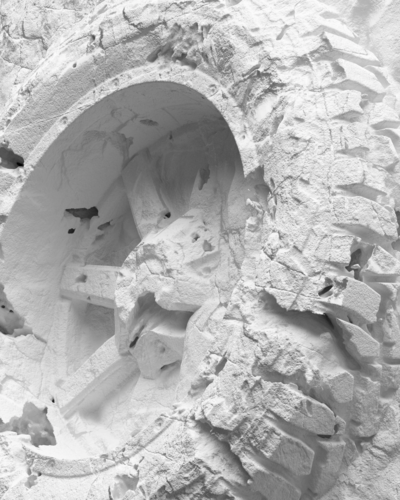

Auto Remnant 2
Are there books which have helped you?
Tipping Point by Malcolm Gladwell, Shoe Dog by Philip Knight, and I mean personally for me, Sam Harris’ Waking up was a great book.
JE
I think that we’ve kind of traded books a few times, so Malcolm Gladwell is always really good. John Maeda’s book on Redesigning leadership. And one book which is fiction is Addlands which is a book about the Welsh countryside and how it evolved. A nice bit of escapism.
An artist or person who inspired you?
Aphex Twin. Just study the career of Aphex Twin and you will learn a lot about the meaning of creativity.
JE
I actually haven’t got an answer for that. Not that I could articulate properly.
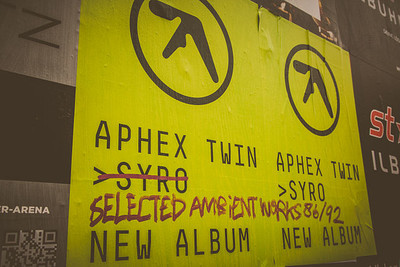

One last piece of advice for creative talents starting a studio nowadays?
I’d say to try and build your studio around the work and not your identity would be a good start. Sometimes you go on the studio’s website and the first thing you see is a black and white portrait of them posing in a nice loft. I’m not sure what that has to do with the work. That’s what I mean by identity. I don’t mean that in a kind of political sense. I prefer to land on your studio because of the work that you’re putting out and not because of how many followers you have on Twitter, or how many opinions you have on Twitter. It’s about your work and not your opinions, I think.
And take creative risks. Think you’ll have to take creative risks, otherwise, you’re not going to make an impact. And the other thing that I would say is to choose your business partner very carefully. You know, you have no idea what you’re about to embark on. I guess some people might start a studio independently, but having done it with a business partner, I can’t really imagine doing it on your own, but people do.
JE
My answer resonates with Jack’s: find a business partner or mentor. Someone else you really strongly agree with. Don’t make it about you, cause you limit yourself then.
JF
I mean we don’t really have huge social media presences personally. With a lot of my heroes and the people I look up to, it’s always been about the work and not about them, or their opinions necessarily. I don’t think we should be talking about ourselves too much. There’s work to be done.
